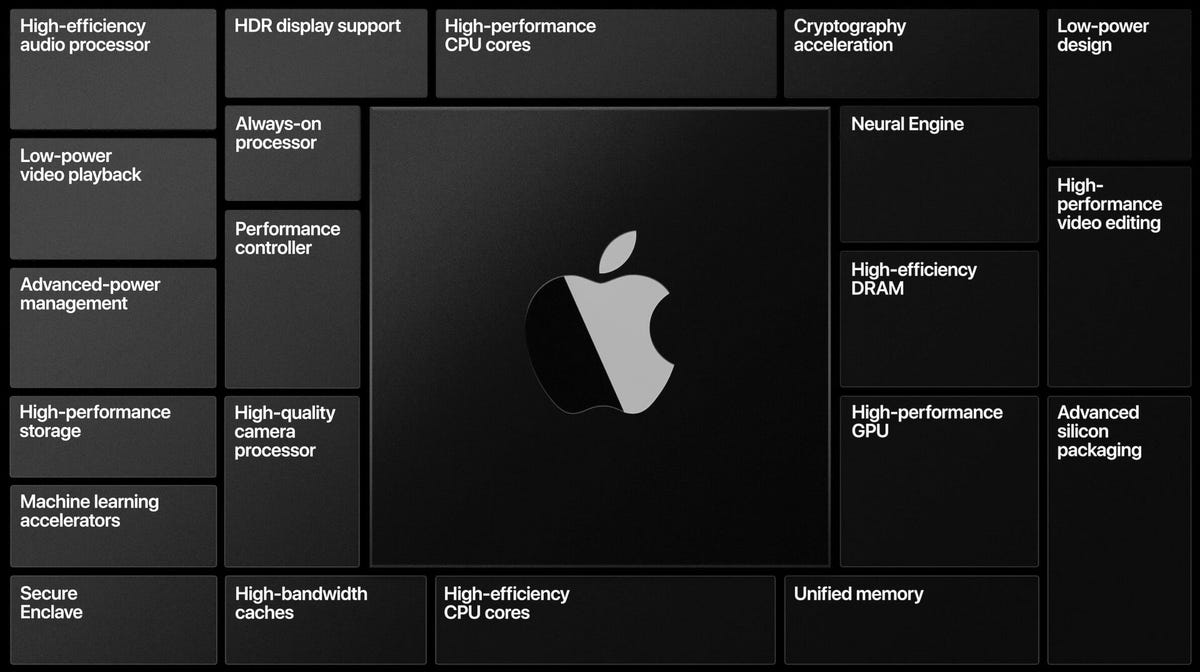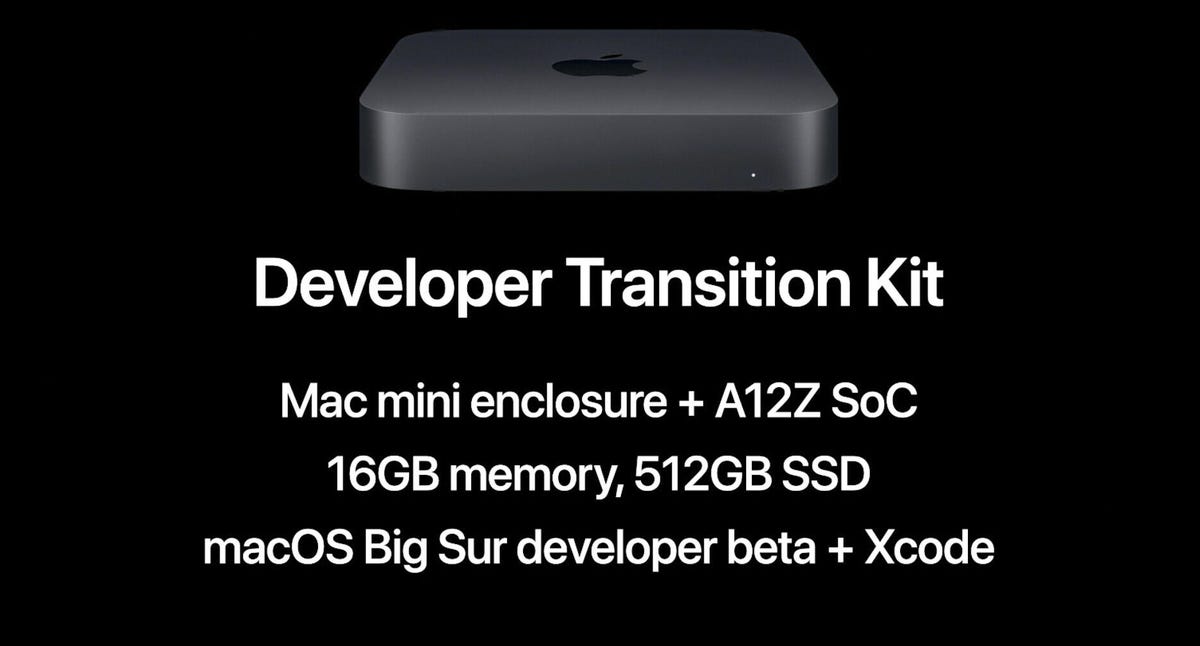This story is part of WWDC 2022, CNET’s complete coverage from and about Apple’s annual developers conference.
Apple is overhauling its Mac computers with its own Arm chips, close cousins to those it designs for its own iPhones and iPads. Moving away from the Intel processors it’s used for the last 14 years is a historic change that disrupts software makers but that could appeal to customers who need better battery life.
“The Mac is transitioning to our own Apple silicon,” Apple Chief Executive Tim Cook said Monday at Apple’s WWDC conference. The first Arm-based Macs will arrive later this year, though developers can order Arm-based Macs this week to get started on building software.


Now playing:
Watch this:
Apple announces its transition to ARM-based chips with…
6:14
Apple is now signaling that it’s got the expertise to challenge Intel in the PC segment, where chips generally consume more electrical power but offer more computing power. It’s betting that the likely advantages of Arm chips — lower power consumption, lower costs and greater control over product plans — will outweigh the disruptions.
“The first thing this will do is give the Mac a whole new level of performance,” said Johny Srouji, senior vice president of hardware technologies. Apple Mac chips also employ mobile device hardware for better power management, graphics, artificial intelligence and secure enclave hardware security hardware.
Apple demonstrated several important apps already adapted for the new chips, taking pains to show the horsepower of its Arm-based Macs. It demonstrated Final Cut Pro playing three simultaneous 4K video streams, Lightroom scrolling and synchronizing edits across a large catalog, and Photoshop being used to edit a large image with complicated edits. Other demos featured Affinity Photo and Cinema 4D.
With a new version of its Rosetta emulation tool, software written for Intel-based Macs will run on the new Arm-based machines. There, Apple demonstrated the Tomb Raider game running at 1080p screen resolution. Apple will support Intel-based Macs for years, the company said.
It’s still not clear exactly how fast Arm-based Macs will be, which products will arrive first, how much they’ll cost, and how good their battery life will be, though. “I am very disappointed Apple didn’t provide a lot of technical details to give confidence to users and developers in the Arm-based processor Mac experience,” said Moor Insights and Strategy analyst Patrick Moorhead.
Later at WWDC, Apple said it’ll have a variety of Arm chips for different size Macs, spanning from more efficient models for compact Macs to beefier, hotter chips that consume more electricity in bigger Macs.
The transition to Arm-based Macs will take up to two years, which could cast a shadow on some products.
“We do wonder whether this could prompt consumers to delay their purchases of existing Intel-based Macs in the next 24 months, on the fear that they’d be buying an orphaned product,” Bernstein analyst Toni Sacconaghi said in a research note Tuesday.
See also
- Apple launches Arm-based Mac, iOS 14, MacOS Big Sur and more
- iOS 14 unveiled: A first glimpse at Apple’s upcoming iPhone software
- See all our WWDC 2020 coverage
Apple’s first Mac Arm chip: A12Z
The chips, which Apple broadly called Apple Silicon, is designed by Apple but will be brawnier than the A-series chips in iPads and iPhones. Apple’s special developer Macs will use the A12Z processor in newer iPad Pro, but Apple said aspects of that Mac Mini-like machine won’t match the Macs that consumers will buy.
One new trick the chip and Rosetta will enable is the ability to run iPhone and iPad software directly on the new Macs.
The switch to Intel chips, rumored for nearly a decade, emerged at the online version of WWDC. The conference ordinarily draws thousands of programmers learning about the latest changes to writing programs for Macs, iPhones and iPads, but went virtual this year because of the coronavirus pandemic. Many of those programmers interested in WWDC now will need to wrestle with the challenge of re-creating their software for Arm Macs.
Computer processors are some of the most complicated products on the planet, with billions of electronic components carefully arranged to balance performance and power consumption. Apple’s A series processors, used in all its mobile devices and members of the Arm chip family, have consistently outpaced rival Arm designs used in Android phones.
Macs are influential PCs that command premium prices, but they still represent less than 10% of computers being used today. Using its own Arm chips offers Apple a chance to cut costs dramatically — saving $100 to $150 in Mac component costs, in Moorhead’s estimate.
Apple at WWDC 2020
- WWDC 2020 live coverage
- Is Apple jettisoning Intel’s processors for MacBooks? We have questions if they do
- How to make your laptop last longer so you don’t have to buy a new one now
Passing those lower prices on to consumers could help Apple compete better against Windows machines, particularly among cost-sensitive buyers like students.
“I think Apple should lower its prices, but I don’t think it will,” Moorhead wrote ahead of Apple’s announcement.
The switch will hurt Intel’s revenue and reputation, but it said in a statement it believes it can still deliver technology that will “redefine computing.”
“We believe Intel-powered PCs — like those based on our forthcoming Tiger Lake mobile platform — provide global customers the best experience in the areas they value most, as well as the most open platform for developers, both today and into the future,” Intel said.
Apple’s third Mac chip transition
Apple has changed Mac chip families before, first from Motorola 68000 family processors to PowerPC chips in 1994 and then to Intel chips in 2006. Each time, it eased the transition with emulation software to enable programs built for the earlier chip design run on the new Macs, though at a significant cost in performance.
One aspect of the transition will be easier on Mac customers this time around: much of the software we use runs in a web browser. Web developers building sites like Google.com or web apps like Facebook.com don’t generally need to know or care what processor a computer is running.
So if you use Google’s Gmail for email and Microsoft’s Outlook 365’s online word processor, Arm-based Macs will be less of a disruption.
Re-creating Mac software
Programmers will have varying degrees of difficulty rebuilding their software for Arm-based Macs while continuing to support Intel-based Macs that will still be used for years.
Developers firmly in the Apple camp, using its Xcode programming tools and its Swift programming language, will have the easiest time with Arm Macs. And programmers tweaking their iPad apps into MacOS versions using Apple’s Catalyst approach also should have an easy time.


Apple’s Arm chips will inherit abilities built into Apple’s A-series chips for iPhones and iPads.
Screenshot by Stephen Shankland/CNET
“The vast majority of developers can get their apps up and running in just days,” said Craig Federighi, Apple’s senior vice president of software engineering.
But many programs, particularly those like Adobe Photoshop that are developed to run on Windows, too, often use other tools and languages. Web browsers, for example, are usually written in the C++ language. There, more work will be required. So while Apple’s Safari browser will be available from day one on Arm-based Macs, other versions could take longer to arrive.
Some developers are excited. “This will mean greater innovation and better performance, not just from a speed perspective but also battery life,” said Jayson Lane, developer of the Quick Draft note-taking app. He acknowledges that developers of heavy-duty software for jobs like sound, photo and video editing will have a harder time moving to Arm. But for simpler apps like his, “the Arm transition will be surprisingly easy … perhaps even as easy as clicking a checkbox.”
Software sometimes is carefully optimized to run as fast as possible on a particular chip design, but programmers have had time to adapt software development tools like Clang, supported by both Apple and Google, to Arm designs, said 451 Research analyst James Sanders.
“Improvements to Arm support in the Clang compiler over the past two years should mitigate optimization challenges,” he said.
Low-level software called drivers that let a computing device communicate with components like network chips and accessories like printers also will need to be rewritten for the new Macs. That could mean support gaps for third-party hardware, and older products may never work with the new Macs.
Arm chips getting faster
Some are worried that Mac Arm chips won’t be fast enough to make emulation useful. One worrisome example is a line of Windows laptops that use Qualcomm’s Arm chips. “It works super well in terms of functionality, but the performance for apps that you need/want like Chrome, Photoshop, or Acrobat Reader make it a non-usable solution,”Steven Sinofsky, Microsoft’s former Windows leader and now a partner at venture capital firm Andreessen Horowitz, said in a blog post ahead of the transition.


Apple will offer developers a transition kit to get started bringing their software to Arm-based Macs.
Screenshot by Stephen Shankland/CNET
Apple touting its new Rosetta emulation software indicates confidence its Arm Macs have enough performance to handle emulation fine, though. “It’s awesome what Rosetta can do with existing games,” said Andreas Wendker, Apple’s vice president for tools and frameworks engineering.
Intel has struggled in recent years to improve its chips’ performance while Apple has steadily advanced its A series of chips — a hundredfold improvement since it began the line, Apple said Monday. The chips’ core performance attribute, the speed of a single thread of computing instructions, has increased each year. And Apple has added new circuitry to speed up graphics and artificial intelligence software, too.
A UK company called Arm licenses designs to companies like Qualcomm but also licenses its’ chip instruction set — the collection of commands software can use to control it — to companies like Apple that design their own. That leaves room for companies to build more powerful processors than are used in most phones if they’re willing to pay for physically larger chips and accept designs that consume more power.
One such example is Fujisu’s A64FX processors, which power the world’s fastest supercomputer. Another is Amazon’s Graviton processors, a low-cost alternative to Intel chips for servers in its enormous Amazon Web Services business. Those chips are based on Arm’s Neoverse designs for data centers packed with servers.
“Apple is not alone in their exploration of Arm for higher-performance scenarios,” Sanders said.




